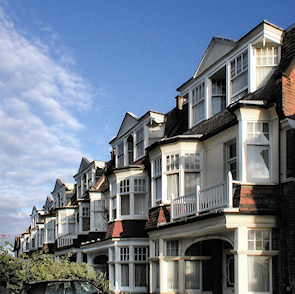West Acton
West Acton, Ealing
One of the most desirable parts of this sprawling suburb and the last to be built up, West Acton was still rural at a time when South Acton was already becoming a slum

John Cary’s Middlesex map of 1786 reveals no indication of habitation between Tile Kiln House on Hanger Lane and Fryes Place, east of Horn Lane. Ten years later, West Lodge was built on the south side of Uxbridge Road. To its north, an 1805 map shows a set of fields belonging to Sir Harry Featherstonehaugh.
In 1876 James Thorne observed that much of Acton had already succumbed to bricks and mortar but “on the west are some pretty lanes.”
Suburban housebuilding here began on the eastern edge of Ealing, when semi-detached houses went up on the West Lodge estate in the first decade of the 20th century. The lodge itself is still standing but has been converted to office use. The 1920s brought the improvements in communications that would transform the area.
West Acton station opened on the newly extended Central Line in 1923 and later in that decade the Western Avenue made London easily accessible by road.
Noel Road was one of the first new streets to be completed, with semi-detached properties priced to appeal to the middle market – around £800. In 1924 a subsidiary of the Great Western Railway Company laid out an estate of appealing little houses and some shops near the main railway line. Reserved for railwaymen, the homes were designed by GWR architect T Alwyn Lloyd, a protégé of Raymond Unwin. West Acton school opened on Noel Road in 1937. By the outbreak of the Second World War today’s West Acton had largely taken shape.
As well as the usual smattering of young professionals and antipodean flat-sharers, West Acton now has Japanese families who want to be near the highly regarded Japanese school in Creffield Road.
Set in West Acton, the TV sitcom Rings on Their Fingers, starring Diane Keen and Martin Jarvis, ran for three series from 1978 to 1980.
